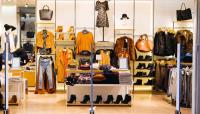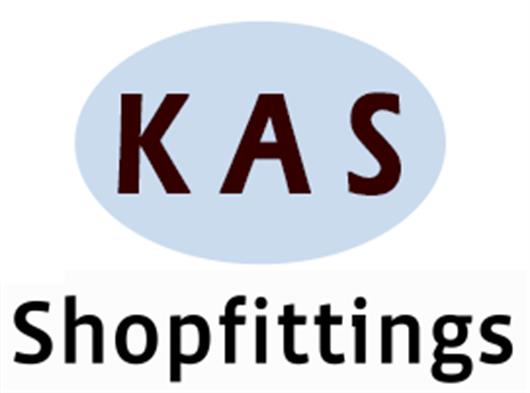 Add My Company
Add My Company
Sign In
How to Maximise your Shop Space
02-08-2023

Having a good store layout can entice your customers to come back, time and time again. It's a key factor in your business's success, as no-one wants to come into a cramped shop, where it's hard to find what you're looking for.
Considering bricks-and-mortar stores are in competition with online retailers, creating an enjoyable shopping experience is vital to give you the edge. Customers will take into account every aspect of their visit, including the range of products, the layout and the customer service.
Consumers want a hassle-free shopping trip - so be sure to plan your store's layout carefully to fulfil their requirements.
Consumer research
Research shows that maximising space effectively, using the appropriate shop fittings, can help with sales. According to a 2016 study by Tijmen Elbers, "The effects of in-store layout and shelf designs impact on consumer behaviour". The way products are displayed on shelves is a key factor in driving sales.
Although having numerous well-stocked shelves is important, overcrowding them can have the opposite effect, negatively impacting on sales. Customers can't be bothered to navigate packed shelves that don't look inviting. The research showed that giving customers a good choice, using efficient shelf-space allocation, improved their perception of a brand.
Retailers can improve sales by up to 70% by using visual product placement. Carefully putting relevant products side-by-side on the shelves, with the adjacent products being connected to each other, can lead to combined purchases. For example, a customer buying sun-screen for a holiday may be influenced into buying travel-size toiletries as well, if they are placed on the adjacent shelf.
The study also revealed that the amount of effort to find the items people wanted might affect their spending. Facing an in-store navigational challenge can cause them to become frustrated and this can result in them giving up and going elsewhere.
How to start
Plan your store's layout with care before taking any practical steps. Analyse the building's specifications and customer traffic flow before you begin installing display units. Create a layout that's maximised for space - and consequently success.
Experts suggest using one of several distinct floor plans, depending on what you're selling and your goals. A grid floor plan is favoured by grocery, convenience and "big box" stores for goods stocked on shelves, such as food, toys, books, homewares and hardware.
Maximise your wall space with a loop floor plan, guiding customers along a set path. This is the common layout for retail stores selling garments, accessories, personal care items, kitchenware, homewares and speciality items.
A free-flow floor plan is popular among boutique and speciality stores, including those selling clothing and accessories. It is also used by retailers that have mixed-use stores, including bakeries that also stock pre-packaged items.
Promotional displays
All shops, whatever their layout, will benefit from in-store product promotions. The location of the promoted product is crucial to influencing sales. It can comprise product shelves at the end of the aisles, often promoting reduced-price goods. Consumers view them as special bargains and may stop and browse, even if these are products they hadn't set out to buy.
The second type of promotion is for new stock, or a range that is on special offer for a short period. The display can take the form of a freestanding, independent display, located on shelving units in the middle of the floor area. Usually in a circular form, customers approaching from all angles will see it as a focal point.
Whichever floor plan you choose, the most important consideration is the accessibility of the goods. Make sure your aisles are wide enough when you're considering the natural flow of the store. When customers enter and begin walking around, nobody wants to encounter a bottleneck, where the aisle is too narrow. People like their own space and don't want to be squeezing past other shoppers in tight corners. Make sure you also consider wheelchair access.
Consumer behaviour
It's common sense that the longer a customer is in your shop, the more chance there is that they will buy something. Influence traffic with your layout - for example, if you're a food store, put essential items like bread and milk at the rear, so customers will walk past other items that might catch their eye on the way.
Larger retailers can place the escalators in such a way that customers will walk past eye-catching displays on their way there. Understanding consumer behaviour will help you to create the ideal layout.
Maximise your retail space per square foot to make more money. Take note if one area is under-performing and change the layout. Rearrange the merchandise there, putting out a good mix of items, such as a combination of high and low-price goods, or fast and slow-selling stock.
An example could be displaying an expensive mobile phone with lower-priced accessories. Give the higher-priced items prominence and allow them more retail space. Have the lower-priced accessories stacked on adjoining fixtures, such as slatwall, so the customer will see everything clearly. They are more likely to buy products linked to the main item they have come in to purchase.
Selling outdoor clothing next to a selection of hats, gloves and scarves is sound retail practice, as is grouping together products of different brands that have a similar look.
Consumer research carried out by Xavier Dr?ze revealed that only around one-third of consumer decisions on purchases were planned before visiting the store. This means the majority of purchases are made through on-the-spot decisions. This is why it pays to link similar or connected products that might catch a browser's eye.
Relaxed environment
Whatever your shop's layout, it can govern your customers' emotions. People want to feel comfortable when they enter a shop. They wish to browse in a relaxed environment, so factors such as your d?cor, the width of the aisles and your merchandising practices are vital.
KAS Shopfittings supplies a wide variety of shop fittings, such as high-quality counters, shelves, slatwall and other display equipment. We will take into account the size and style of your retail premises to provide a bespoke solution.
For more information on How to Maximise your Shop Space talk to KAS Shopfittings
Enquire Now
List your company on FindTheNeedle.

